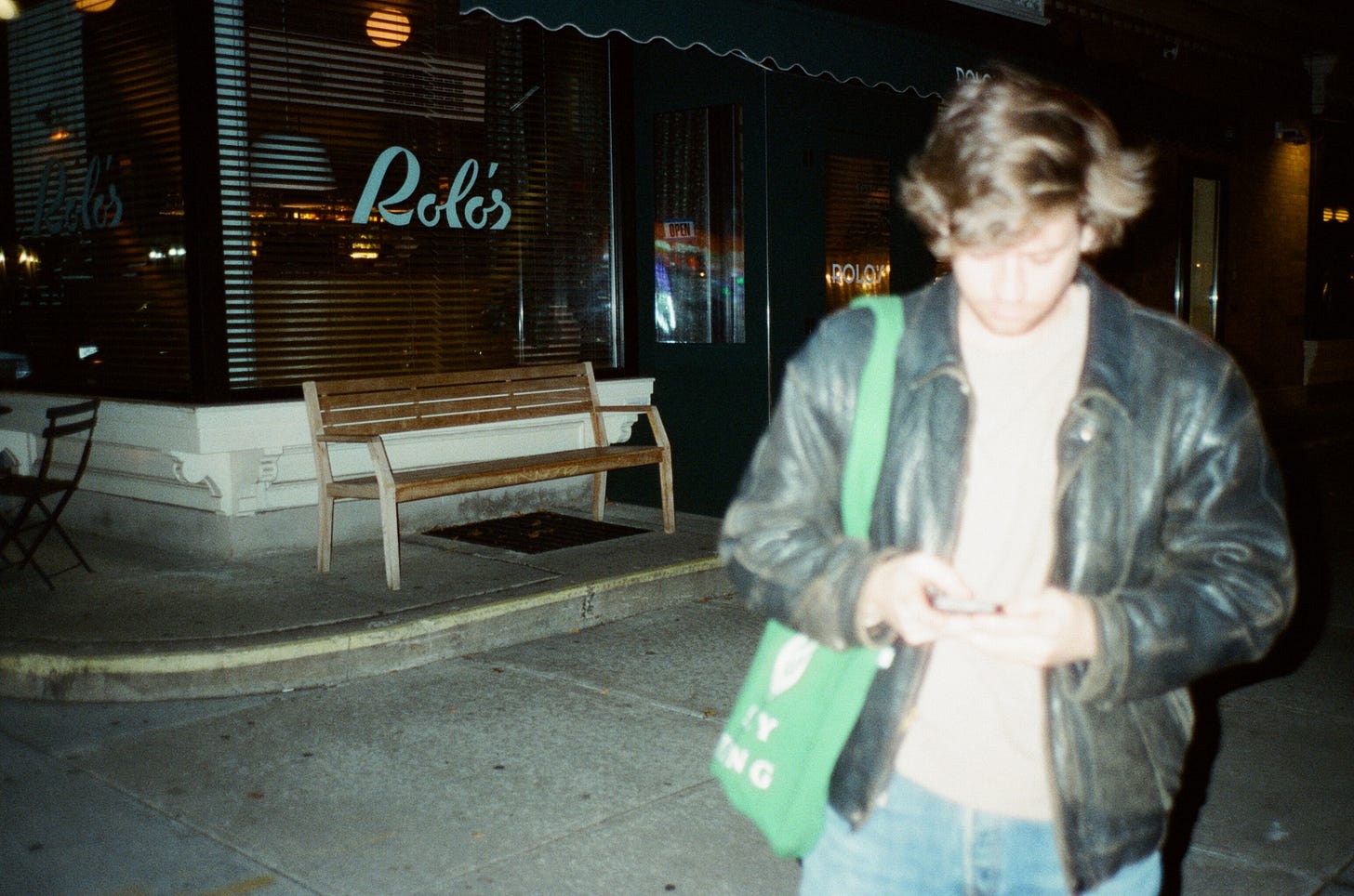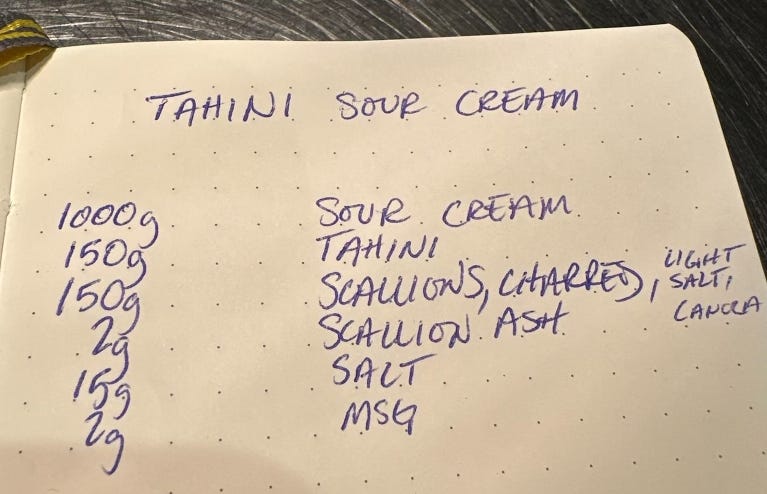ESPN made me move to Connecticut five days after I graduated from college, which sucked. Outside of Lobster Landing and a few bagel shops, the state is a food wasteland. Colleagues would tell me to check out West Hartford for good spots, but you can only pretend to take bartaco seriously for so long. The pizza is … fine. There’s no good coffee.
My favorite thing to do is dining out somewhere great, and suddenly that was impossible. So I came up with a plan: Buy a bunch of cookbooks and teach myself how to recreate my favorite restaurant dishes.
I didn’t grow up in a family that cooked regularly. In college, I played around with making turkey burgers on a busted Foreman grill. My skills were so amateur that the first time I tried to make fried rice, I didn’t cook the rice first. Tom Collichio would not have been a fan of that dish’s texture.
On an intern salary of $10.50/hour (thanks, Disney), I’d refresh the cooking section of Apple Books every morning and see what was on sale for $0.99. That has to be bad for writers, but it was great for my cooking journey. I built up a digital collection of cookbooks that became a $50 crash-course culinary school. They followed me from Connecticut to Cambridge and from LA to New York, where I used that knowledge to pretend I knew what I was doing in a professional kitchen.
Here are the 11 books that taught me the most, along with a list of recipes from each that I continue to pull from today.
Ginger scallion noodles
Jonah crab claws with yuzu mayo
Country ham
Fried brussels sprouts with fish sauce vinaigrette
Bo ssam
This is a weird first cookbook. It’s mostly narrative. The first recipe, for ramen, contains eight links to additional, necessary recipes. At one point Wylie Dufresne shows up to discuss meat glue. But about half of the dishes are fairly accessible for a home cook, with a high return on flavor for a low level of time investment, and that was enough for me.
Multiple friends who eat my cooking regularly have described me as a “fish sauce slut,” and I have Chang to thank for that.
Taste & Technique | Naomi Pomeroy | 2016
Soft scrambled eggs with herbed crème fraîche
Seared scallops
Pan-seared pork chops
Until I read Naomi’s book, I approached recipes as silos. Here’s this list of ingredients and set of instructions, let me follow it closely and see what happens. Taste & Technique organizes itself to say hold up, think about what you’re doing. There are building blocks to consider here. There’s a reason why you can get eggs to this perfect texture if you cook them this way. There are tricks to success, like mastering sauce work. It’s always surprising to me when I see a stacked cookbook collection that doesn’t include this book.
(Naomi, start a Substack).
Poole’s | Ashley Christensen | 2016
In Pursuit Of Flavor | Edna Lewis | 1988
Pimento cheese
Cornbread
Macaroni au gratin
Red rice
Grits
I’m from the South, and these were my two guides into that style of cooking. When I think about what my food is now, it’s rooted in things I learned from Ashley Christensen and Edna Lewis. Simple food done well, with strong flavors, and a focus on making people happy.
There isn’t anything showy here. Instead, there’s a clear mission to use Southern cooking to serve something people will love. No more, no less.
Everything I Want To Eat | Jessica Koslow | 2016
Every type of egg (fried, poached, soft-boiled, quiched, frittatad)
Sorrel pesto rice bowl
Crispy rice salad
Seasonal hash
Justice for Sqirl.
This is when I discovered you really can make food at home just as well as the cooks at the restaurant do it. The “wow, I did it” moment after nailing this rice bowl was a high I couldn’t escape. Sure, it involved buying a sorrel plant from the Milford Whole Foods, which is ridiculous. But, you, know, worth it.
This is also when I realized that the larder section of a cookbook is where the real magic happens.
Salt, Fat, Acid, Heat | Samin Nosrat | 2017
Night + Market | Kris Yenbamroong | 2017
Dining In | Alison Roman | 2017
This trio makes up my core curriculum. While I find a home in Southern styles, my brain rushes back to techniques from these three books when I don’t know what to cook. In 2017, I cooked my way through each of them from start to finish. I finally felt confident in a home kitchen. I’m not listing recipes here because to me they’re core texts. Just do it all.
Side note: One underrated thing about Alison Roman is that her writing and recipes are an unmatched gateway into a love of baking. Make the biscuits or the strawberry shortcake cobbler in Dining In and try to tell yourself you don’t like pastry. You can’t.
Prune | Gabrielle Hamilton | 2014
Radishes with sweet butter and kosher salt
Omelette with parmesan
Sliced Jersey beefsteak tomatoes with warm French salted butter
Muffaletta salad
Gabrielle spends a lot of this book telling her cooks how not to mess up Prune recipes. It’s like you’re in on a secret from one of the best chefs in America. Each line is invaluable.
A Very Serious Cookbook | Jeremiah Stone and Fabián von Hauske | 2018
Pommes darphin
I’d be lying if I said I regularly cooked anything else from this headspinningly complex book, but plenty of it has stuck with me. Jeremiah and Fab are geniuses, and it’s thrilling to see all of their ideas in one place, even if they’re only for loose inspiration.
iPhone photo library | Cool World | 2022
Black garlic ranch
Tahini sour cream
Fried chicken sando
Working in a kitchen, I learned professional recipes are just lists of ingredients in order, like this. And that you’re expected to listen to someone talk you through the technique once then recreate it yourself.
It was startling at first, but I came to love it. My instincts improved. My ideas got better. My skill and seasoning sharpened.
Most days at the restaurant, I was in charge of the salad for family meal. Salad was a loose term. The dish could be any vegetable-forward side to accompany the main coming from the sauté cook. After clocking in for the day, I’d head down to the walk-in, check our shelf for leftover ingredients, and come up with a plan.
Occasionally, staring at a sheet of persimmons, inspiration wouldn’t strike. So I’d pull out my phone, do a quick search across my cookbook collection and remember — oh yeah, candy some nuts and toss in some cheese. That’s perfect. That’ll make everyone happy.








The mention of Prune made me drool a little
Salt, Fat, Acid, Heat and Dining In are two of my foundational cookbooks, too. I share a palate with Alison Roman—salty/briny/umami/herby—and Samin Nosrat’s explanatory sections about cooking basics helped me understand the why behind a lot of the what.